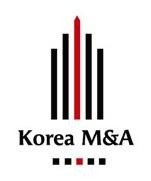Notice
Recent Posts
Recent Comments
| 일 | 월 | 화 | 수 | 목 | 금 | 토 |
|---|---|---|---|---|---|---|
| 1 | 2 | 3 | 4 | |||
| 5 | 6 | 7 | 8 | 9 | 10 | 11 |
| 12 | 13 | 14 | 15 | 16 | 17 | 18 |
| 19 | 20 | 21 | 22 | 23 | 24 | 25 |
| 26 | 27 | 28 | 29 | 30 | 31 |
Tags
- Letter of intent
- sk
- Investment
- Japan
- Merger
- taiwan
- Korea M&A
- OTCBB
- China
- hong kong
- M&A
- CA
- Malaysia
- Confidential Agreement
- Bank
- capital gate
- China Construction Bank
- cgi korea
- LOI
- nda
- acquisition
- securities
- Japan Tobacco
- LOTTE
- private equity
- case study
- PEF
- Korea
- Acquistion
- buyout
Archives
- Today
- Total
Korea M&A Corporation
The people problem in mergers 본문
The announcement of a merger sends a strong message to the market: you are trying to move the business forward; you are looking for expansion and rationalization opportunities; you are responding to the increasing pressures of globalization and technological change. Unfortunately, such an announcement also sends just as strong a message to your competitors and to the recruiting firms that serve them: your employees are ripe for the picking.
Competitors understand that your employees don’t know whether they have a job or, if they do, where it will be located, where they fit into the new company’s structure, how much pay they will receive, or how their performance will be measured. Key employees usually receive inquiries within five days of a merger announcement—precisely when uncertainty is at its highest. And no organizational level is exempt.
Competitors understand that your employees don’t know whether they have a job or, if they do, where it will be located, where they fit into the new company’s structure, how much pay they will receive, or how their performance will be measured. Key employees usually receive inquiries within five days of a merger announcement—precisely when uncertainty is at its highest. And no organizational level is exempt.
Comments

 invalid-file
invalid-file